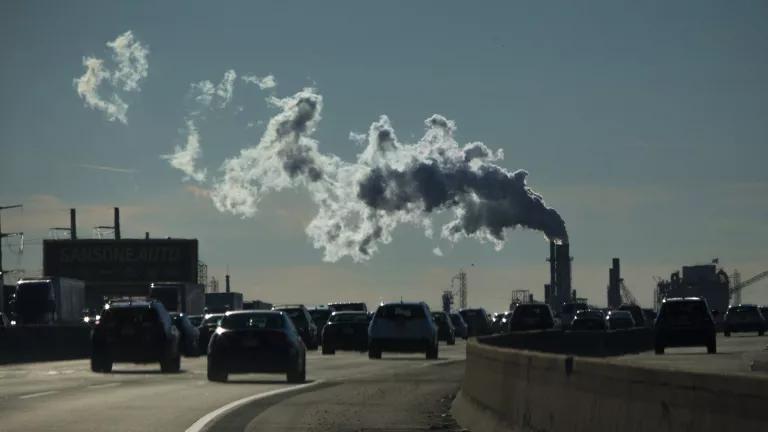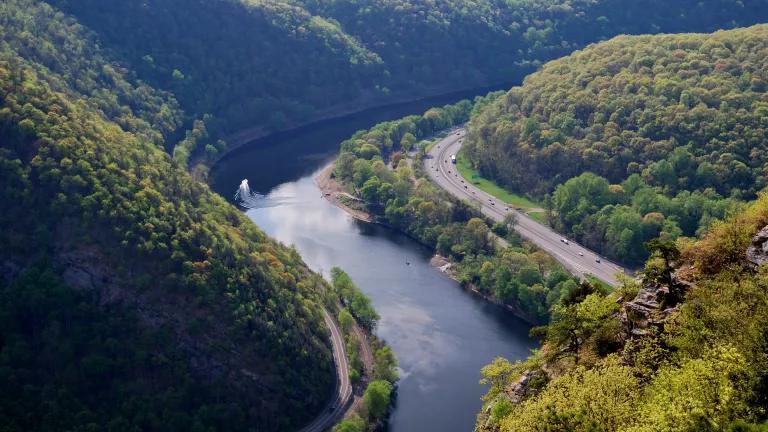Stop the Williams Pipeline and the Dumping of Toxic Waste!

Developers of the proposed Williams Pipeline want to dump 735,000 cubic yards of toxic dredged-up sediment into the New York-New Jersey waterways. Our waterways are not a garbage dump—tell the U.S. Army Corps of Engineers to deny Williams' request for ocean dumping!
It is no secret that the Williams Pipeline—a proposed 26-inch diameter pipeline that would transport fracked natural gas between Pennsylvania, New Jersey, and New York—is a controversial project. The pipeline has received strong community opposition because it would pollute our waters and perpetuate our country’s dependence on dirty fossil fuels that threaten our communities, our climate, and our efforts to move toward a clean-energy future. And it has already been rebuked by both New York and New Jersey, whose governors have denied Williams key water quality permits, citing the pipeline’s dangerous impacts on the states’ waterways and ecosystems (though that hasn’t stopped Williams from re-applying for those same permits).
Now, Williams is seeking to dump material dredged during construction of the pipeline in the New York Bight portion of the Atlantic Ocean, located off the New Jersey coastline and south of New York’s Staten Island, Coney Island, and the Rockaways. Research compiled by Williams itself finds that this material contains mercury, lead, arsenic, and PCBs—New York and New Jersey found it to be so toxic, in fact, that they haven’t allowed it to be dredged up in the first place (let alone deposited elsewhere). NRDC has already submitted comments opposing Williams' request for ocean dumping.

The proposed dump site, the Historic Area Remediation Site ("HARS") in the New York Bight, is an area in the midst of ecological recovery. Throughout the 20th century, sewage, solid waste, and industrial chemicals contaminated the Bight and the adjacent New York-New Jersey Harbor Estuary; for years, pollution filled the waters, washed ashore on New York and New Jersey beaches, and debilitated the health of the two ecosystems and their aquatic inhabitants.
Fortunately, over the past few decades, the health of these waterbodies has revived, thanks to policy changes and public efforts to clean up the area. In 1997, the site where decades of toxic waste had been deposited was re-named the “Historic Area Remediation Site,” signifying the commitment to revitalizing the health of these ocean ecosystems. By 2016, over one-third of the waterfront was estimated to serve as parks or public spaces—now every year, millions of people enjoy the waterfront for boating, kayaking, sailing, or sports fishing. The New York Bight and Harbor are also now home to a diverse array of aquatic species, whose continued survival depends on the cleanliness of the waterways. These species include the endangered Atlantic sturgeon, the North Atlantic right whale, and the leatherback sea turtle.

Despite the fact that these ecosystems are recovering from decades of contamination, Williams wants to dump hazardous material at the HARS, the very site that is, by name, in remediation. This plan is illogical and destructive; the waste from Williams would not help remediation efforts, but would only further damage the environmental health of the area.
The U.S. Army Corps of Engineers is authorized to prohibit the dumping of dredged materials into the ocean when they find the effects of dumping to be harmful—and dumping these toxic dredged materials would prove catastrophic. The pollution would harm the ecosystem, endanger local fish and aquatic wildlife, diminish the recreational and economic value of the area. In short, if Williams’ proposal for ocean dumping is granted, it will undermine the real progress that has been made in improving the health of our waterways, and it will promote the expansion of the fossil fuel industry, escalating the climate crisis and threatening the future of our planet.
Join us—click here to take a stand to protect the New York/New Jersey waterways and to block the Williams Pipeline! Submit your public comments to tell the U.S. Army Corps of Engineers to deny Williams’ request for ocean dumping.


